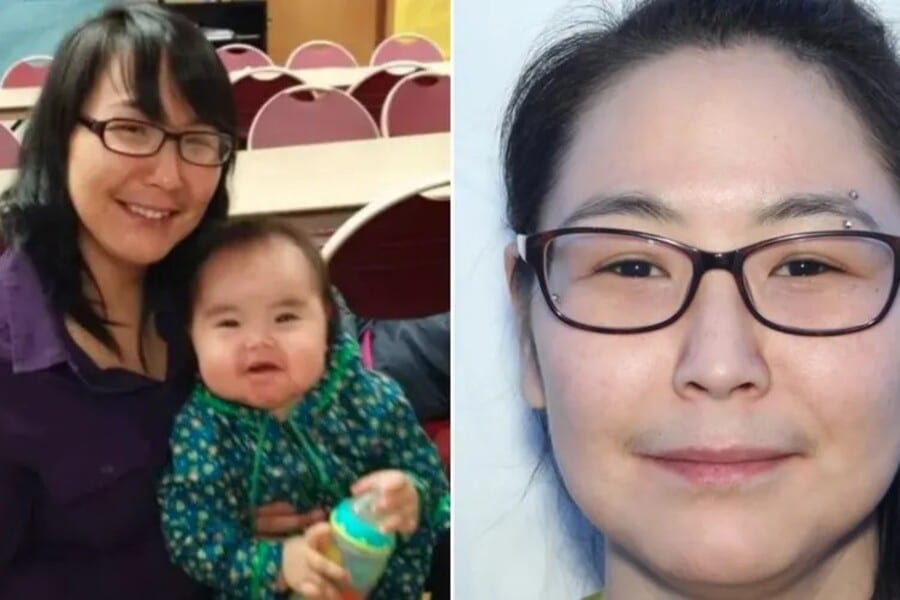
In Alaska, where the untouched wilderness meets the icy embrace of the Bering Sea, a community grapples with a haunting mystery that has seared its collective conscience.
On August 30, 2020, the fabric of this close-knit community was torn asunder when Florence Okpealuk vanished into the thin, cold air, leaving behind not just her items—a poignant reminder of her sudden absence—but also a trail of unanswered questions that have since echoed through the desolate landscapes of this remote frontier.
Found in a miner’s tent on West Beach, her belongings, starkly out of place in the rugged surroundings, serve as a grim marker of her last known whereabouts and the beginning of a deeply troubling narrative.
This narrative is not solely one of personal tragedy but also of systemic failures that have allowed such disappearances to become distressingly common, particularly among Indigenous communities. As the mystery of Florence Okpealuk’s fate unfolds, it reveals the complex interplay of societal neglect, cultural disparities, and a community’s undying hope for answers and justice.
The Disappearance
On the day Florence Okpealuk disappeared, the tight-knit community of Nome was thrust into a bewildering state of fear and confusion. Witnesses last saw her near the fringes of West Beach, an area known for its transient gold mining camps, sparking immediate concern when she failed to return home.
Law enforcement swiftly coordinated with local volunteers, launching an exhaustive search that spanned the rugged terrains of the Alaskan wilderness. Amid the organized chaos, the emotional toll on Okpealuk’s family and friends began to mount, a poignant blend of hope and despair taking root in their hearts.
Her sudden absence left a void filled with unanswered questions, each day without news a heavy weight on the shoulders of those who knew her best. This period was marked not only by the fervent efforts to find her but also by the community coming together, sharing stories of Florence’s warmth and spirit, clinging to the sliver of hope that she might be found safe.
Search Efforts Unfold
The search for Florence Okpealuk unfolded with urgency, confronting the daunting expanse of Nome’s wilderness. The Alaska State Troopers, FBI, Nome Police, and volunteers, including the Nome Volunteer Fire Department Search and Rescue Team, were mobilized, embodying a diverse coalition united by a single goal.
The rugged terrain, characterized by dense forests, treacherous waters, and unpredictable weather, posed significant logistical challenges, necessitating an adaptive search strategy. Ground teams combed through the underbrush, while aerial surveillance provided a bird’s-eye view of the vast landscapes, hoping to uncover any trace of Okpealuk. Sophisticated technologies, including drones equipped with thermal imaging, were deployed, offering hope that modern tools could penetrate the wilderness’s secrets.
Yet, despite these Herculean efforts and the deployment of advanced search techniques, the mystery of Okpealuk’s whereabouts remained unsolved, highlighting the profound challenges of searching in such a remote and unforgiving environment.
Spotlight Through “Up and Vanished”
Payne Lindsey, renowned for delving into cold cases on his podcast “Up and Vanished,” turned his investigative lens towards the perplexing disappearance of Florence Okpealuk after being contacted by her friend, Delilah Johnson.
The aim was clear: to thrust the case back into the public eye, leveraging the podcast’s reach to unearth new leads and rally community support. Lindsey’s approach, combining meticulous research with compelling storytelling, offered a fresh perspective on Okpealuk’s case, which had seen diminishing media attention.
By featuring her story, Lindsey not only highlighted the challenges of solving disappearances in remote areas like Nome but also underscored the critical role of media exposure in reinvigorating public interest and investigative efforts. “Up and Vanished” became a platform for amplifying the voices of those affected by Okpealuk’s disappearance, illustrating the power of media attention to galvanize action, draw in crucial tips, and, potentially, pave the way towards uncovering the truth in cold cases.
In the heart of Nome, Alaska, Florence Okpealuk’s life story unfurls, a narrative rich with dreams, adversity, and profound love for her daughter. Moving to Nome in hopes of securing a brighter future, Okpealuk embodied the spirit of resilience amidst personal struggles. Her life in this remote, tight-knit community was a testament to her determination and the challenges she faced, highlighting her humanity beyond the tragedy of her disappearance.
This poignant tale is set against the backdrop of the crisis affecting Indigenous women across North America — a grim saga of missing and murdered Indigenous women (MMIW) that underscores deep-seated systemic issues. The statistics are harrowing, reflecting not just individual tragedies but a pervasive pattern of violence, exacerbated by racial, gender, and jurisdictional complexities. Okpealuk’s story, while unique, is part of this broader crisis, bringing to light the historical and ongoing struggle of Indigenous communities against a backdrop of systemic neglect.
The response of the Nome community to Okpealuk’s disappearance underscores a collective resilience and determination. Grassroots movements, vigils, and the heartfelt testimonies of those who knew Okpealuk paint a picture of a community united in its search for answers and justice. This solidarity is a beacon of hope, driving efforts to keep her story and the broader MMIW crisis in the public eye.
Addressing this crisis demands systemic change — a call echoed by activists and community leaders who advocate for improved law enforcement practices, enhanced data collection on MMIW cases, and increased resources at both the federal and state levels. These changes are crucial in preventing future tragedies and ensuring justice for the countless women who have vanished or been murdered.
Okpealuk’s story, intertwined with the MMIW crisis, highlights the resilience of those fighting for justice in the face of overwhelming odds. It’s a call to action for all of us to support MMIW initiatives, remain informed, and actively contribute to efforts that seek to uncover the truth and foster change. This narrative not only honors the memory of Florence Okpealuk and others like her but also serves as a reminder of the power of community, the importance of resilience, and the unwavering hope that justice will prevail, urging us to stand in solidarity with Indigenous communities against the shadows of adversity.








